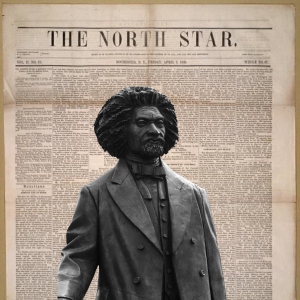Beyond the First Draft: Mastering the Art of Revision and Self-Editing for Powerful Prose
4 min read
The first draft is often celebrated as a major victory—and it should be. Finishing a story, novel, or essay is no small feat. But the truth is, the real magic of writing happens after the first draft, in the revision and self-editing process. It’s here that writers refine their voice, sharpen their ideas, and breathe life into their narratives.
Mastering the art of revision isn’t just about polishing grammar and fixing typos. It’s about digging deeper—reimagining, reshaping, and elevating your work to its fullest potential. Here’s how writers can approach revision strategically to produce prose that is clear, dynamic, and unforgettable.
Step 1: Take a Break Before Diving In
After finishing your first draft, give yourself some distance. Stepping away—whether for a few days or a few weeks—allows you to return to your work with fresh eyes. You’ll see flaws more clearly and notice possibilities for improvement that weren’t visible when you were deep in creation mode.
Tip: During this break, read widely, especially works in your genre. It can help recalibrate your inner editor.
Step 2: Read Like a Reader, Not a Writer
When you first return to your manuscript, read it through without making major changes. Focus on big picture elements:
- Does the story hold your attention?
- Are the characters believable and engaging?
- Is the pacing smooth, or are there parts where the momentum drags?
- Is the emotional arc satisfying?
Make notes as you read, but resist the urge to fix line-by-line issues right away. Revision is most effective when you prioritize the whole before obsessing over the details.
Step 3: Rebuild the Foundation—Focus on Structure
Before polishing your sentences, ask yourself:
- Does the story have a clear beginning, middle, and end?
- Are there stakes that escalate as the story progresses?
- Do your chapters and scenes build tension, reveal character, or advance the plot?
You might find that certain scenes need to be cut, moved, or rewritten entirely. Think of your manuscript as a house: if the foundation isn’t strong, no amount of cosmetic work will make it livable.
Tip: Create a simple outline based on your draft and map out major turning points. See if there are gaps, redundancies, or structural weaknesses.
Step 4: Deepen Character Development
Characters are the heart of any great story. During revision, focus on ensuring your characters:
- Have clear desires and motivations.
- Face meaningful conflicts and make active choices.
- Grow or change by the end of the story.
Ask yourself: Are my characters’ actions consistent with who they are? Do their relationships feel authentic and dynamic?
Exercise: Write a brief diary entry from the perspective of your main characters during a key moment in the story. This can reveal emotional nuances that need to be amplified in the narrative.
Step 5: Sharpen Your Prose—Clarity Over Cleverness
Once the structure and characters are solid, it’s time to polish the language. Good prose is clear, vibrant, and purposeful.
Look for:
- Wordiness: Eliminate unnecessary words or phrases.
- Passive voice: Replace with active constructions where possible.
- Repetition: Cut or vary repeated words, ideas, or sentence structures.
- Clichés: Replace tired expressions with fresh imagery.
- Dialogue: Make sure it sounds natural and serves a purpose.
Tip: Read your work aloud. Hearing your sentences helps spot awkward phrasing, pacing issues, and tonal inconsistencies.
Step 6: Tighten Pacing and Strengthen Momentum
Even a beautifully written story can falter if the pacing feels off. During revision:
- Shorten or eliminate scenes that don’t push the story forward.
- Vary sentence lengths to create rhythm—shorter sentences speed up action, longer ones allow reflection.
- Use cliffhangers, emotional beats, or revelations at chapter ends to encourage readers to keep turning pages.
Step 7: Get Outside Feedback (Then Trust Yourself)
Once you’ve revised on your own, it’s invaluable to get feedback from trusted readers, critique partners, or professional editors. Fresh perspectives can highlight blind spots and offer solutions you might not have considered.
However, remember: not all feedback must be followed. Trust your instincts about what serves your story best.
Step 8: Final Polish—Line Editing and Proofreading
After deep revision and incorporating feedback, your last step is a fine-tooth comb edit:
- Hunt for typos, grammar errors, and formatting inconsistencies.
- Double-check character names, timelines, and factual details.
- Ensure consistency in style and tone throughout the manuscript.
This is where your work transitions from “almost finished” to “ready for the world.”
Self-Editing for Fiction Writers by Renni Browne & Dave King
A classic, practical guide on how to edit your own fiction like a pro—accessible, clear, and actionable.
Revise: The Scholar-Writer’s Essential Guide to Tweaking, Editing, and Perfecting Your Work by Pamela Haag
Great for nonfiction or academic writers, focused on transforming rough drafts into polished pieces.
How We Do It: Black Writers on Craft, Practice, and Skill
Edited by Jericho Brown (Forthcoming June 2025)
This upcoming anthology (which may be available for pre-order) features essays from contemporary Black writers on the craft of writing—including revision, style, structure, and perseverance.
Bird by Bird: Some Instructions on Writing and Life by Anne Lamott
Part writing manual, part inspiration—her chapter on “Shitty First Drafts” is iconic for good reason.






